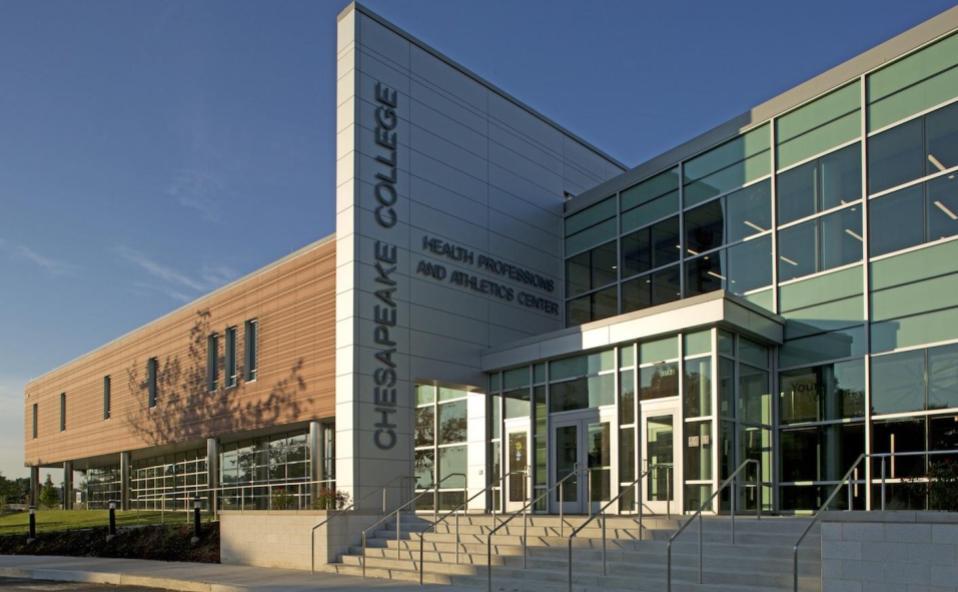Workforce training on the Eastern Shore took a leap forward recently with the award of $2.5 million in federal and state funds for training programs at Chesapeake College.
The college offers a variety of both credit and noncredit classes designed to help students prepare for transfer to four-year institutions, immediate entry into a career, or enhancement of work-related skills.
In one of the last federal legislative actions of 2022, U.S. Senators Ben Cardin and Chris Van Hollen (both D-Md.) secured $1.2 million in Congressionally Directed Spending for workforce training at Chesapeake College in the fiscal year 2023 omnibus funding bill signed by President Biden during the final week of the year.
“Investing in our workers is essential to building an economy where everyone has a chance to succeed. That’s why we secured this direct federal investment for Chesapeake College’s workforce training program. These funds will equip more Marylanders with valuable skills that will help them attain good-paying jobs, including those that will be in high-demand as we’re also making historic investments in modernizing our infrastructure. I will keep working to support the growth of our skilled workforce and bring greater opportunity to the people of our state,” said Senator Van Hollen, a member of the Appropriations Committee.
Senator Cardin said, “Congressionally Directed Spending is designed to meet the local needs of our communities, which is exactly what Chesapeake College continues to do for Eastern Shore workers and employers. Team Maryland will keep working to promote federal investments that help train our students in the very skills that will help our communities today and into the future.”
The $1.2 million in federal funds will support expansion of Chesapeake’s popular welding program. Through Chesapeake’s program, students learn skills for high-demand jobs in the region. Program expansion includes a mobile welding training lab designed to reach students where they live and work.
Funds will also be used for the creation of an Advanced Manufacturing Program that will provide training in Computer-Aided Design, Computer-Aided Manufacturing, Computer Numerical Control Plasma, Computer Numerical Control Router, 3D printing, universal laser systems and robotics.
“We have exciting plans for expansion of our workforce training programs and these funds will help us reach our program goals,” said Chesapeake President Clifford P. Coppersmith. “Both Senator Van Hollen and Senator Cardin are strong supporters of Chesapeake’s mission, and of our role in driving economic development on the Eastern Shore. We’re grateful to have support at the local, state and national levels for these critical workforce programs.”
Chesapeake also received $1.35 million from the Rural Maryland Economic Development Fund with support from Caroline, Dorchester, Queen Anne’s and Talbot counties.
The college will use these funds to expand Marine Trades programming, enhance Marine Trades lab spaces, acquire an on-site learning vessel and hire additional personnel.
A coordinator position will be created to build an Advanced Manufacturing Program, develop the program curriculum and select necessary equipment.
A new navigator will be a liaison between the local business community and Chesapeake’s proposed Center for Innovation and Entrepreneurship.
New staff will be added to recruit for the trades programs, and to provide advising and tutoring for trades students.
In addition, Chesapeake will increase workforce training options in Dorchester County with a proposed auxiliary truck driver instruction site.
“Both area businesses and their prospective employees will benefit from the training these funds will help us provide,” Dr. Coppersmith said. “Our workforce students will have enhanced learning experiences and more options as they prepare for new careers in promising industries.”
For more information about Workforce Training at Chesapeake, please contact [email protected]




Write a Letter to the Editor on this Article
We encourage readers to offer their point of view on this article by submitting the following form. Editing is sometimes necessary and is done at the discretion of the editorial staff.